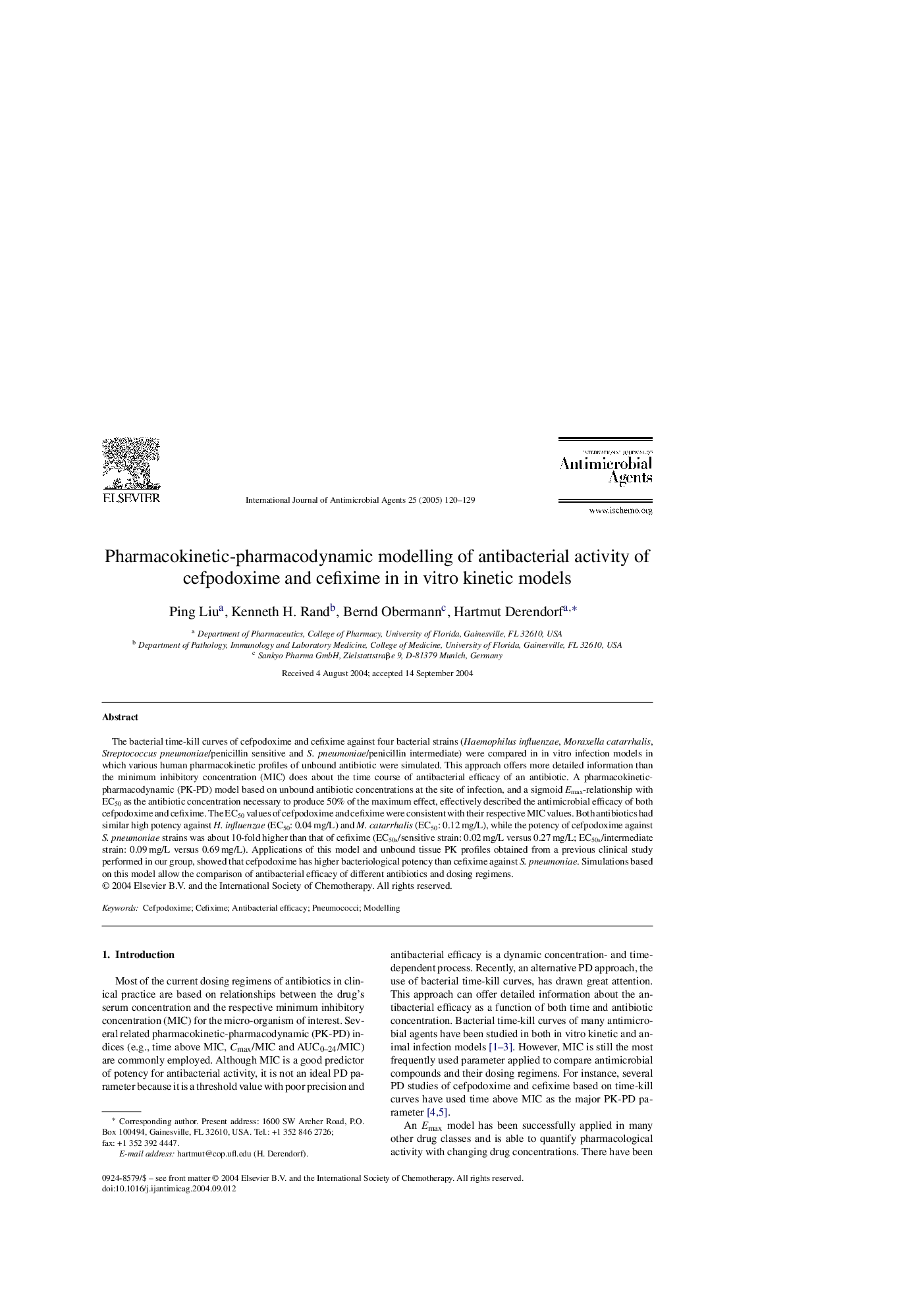| Article ID | Journal | Published Year | Pages | File Type |
|---|---|---|---|---|
| 10027994 | International Journal of Antimicrobial Agents | 2005 | 10 Pages |
Abstract
The bacterial time-kill curves of cefpodoxime and cefixime against four bacterial strains (Haemophilus influenzae, Moraxella catarrhalis, Streptococcus pneumoniae/penicillin sensitive and S. pneumoniae/penicillin intermediate) were compared in in vitro infection models in which various human pharmacokinetic profiles of unbound antibiotic were simulated. This approach offers more detailed information than the minimum inhibitory concentration (MIC) does about the time course of antibacterial efficacy of an antibiotic. A pharmacokinetic-pharmacodynamic (PK-PD) model based on unbound antibiotic concentrations at the site of infection, and a sigmoid Emax-relationship with EC50 as the antibiotic concentration necessary to produce 50% of the maximum effect, effectively described the antimicrobial efficacy of both cefpodoxime and cefixime. The EC50 values of cefpodoxime and cefixime were consistent with their respective MIC values. Both antibiotics had similar high potency against H. influenzae (EC50: 0.04Â mg/L) and M. catarrhalis (EC50: 0.12Â mg/L), while the potency of cefpodoxime against S. pneumoniae strains was about 10-fold higher than that of cefixime (EC50s/sensitive strain: 0.02Â mg/L versus 0.27Â mg/L; EC50s/intermediate strain: 0.09Â mg/L versus 0.69Â mg/L). Applications of this model and unbound tissue PK profiles obtained from a previous clinical study performed in our group, showed that cefpodoxime has higher bacteriological potency than cefixime against S. pneumoniae. Simulations based on this model allow the comparison of antibacterial efficacy of different antibiotics and dosing regimens.
Related Topics
Life Sciences
Immunology and Microbiology
Applied Microbiology and Biotechnology
Authors
Ping Liu, Kenneth H. Rand, Bernd Obermann, Hartmut Derendorf,
